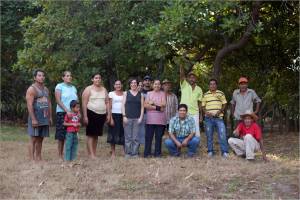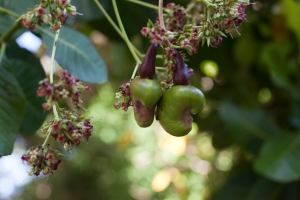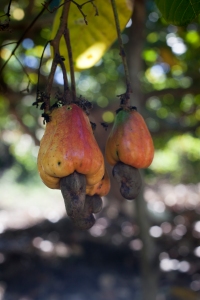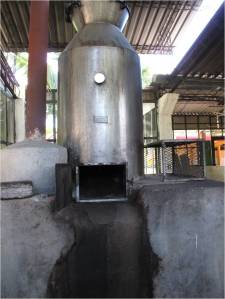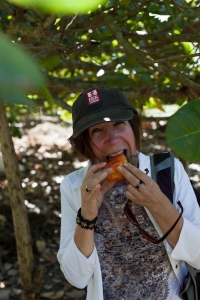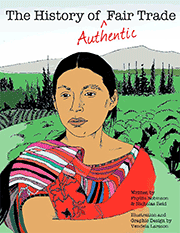Read Part I here.
The Lempa River, Armed Conflict, Refugees and Repatriations
In November 1989, the FMLN launched a major offensive in the hopes of sparking an insurrection across El Salvador which would once and for ever end the devastating civil war. The Salvadoran military retaliated viciously. One of the most famous incidents, which drew international attention, shock, and outrage, was the brutal and audacious cold-blooded massacre of six Jesuit priests, their housekeeper and her teenage daughter. The Jesuit priests had long been outspoken advocates of a peaceful settlement to the war and the need for social justice in the country. Pulled out of their beds from their rooms at the University of Central America where they lay sleeping, and shot repeatedly in the head at close range, the soldiers wanted to make their point that they were killing those they accused of being the “intellectual authors” of the Salvadoran Left.
I was living in Somerville, MA at the time of the massacre, where 6,000 of the 20,000 Salvadoran refugees who had migrated to the Boston area were now trying to rebuild their lives. A group of local Salvadorans had formed a committee to provide assistance to the refugees, educate North Americans about the realities of the conflict and the struggle for justice in the country with the goal of supporting their countrymen and putting pressure on the U.S. government to stop funding the war. There I was one day, volunteering in their office, when I was asked if I could pick someone up at the airport. The guest was Miguel Ventura, a prominent Salvadoran priest. Miguel asked if I would mind setting up a projector, as he had just been given some slides before leaving the country which he wanted to view. It turned out to be a box of photos of his closest friends and colleagues, the assassinated Jesuits, who had just been massacred at the UCA. I turned my head away to avoid seeing the particularly horrible close-ups, but Miguel said it was a sign of respect to view each one and that their plight should only serve to make us more determined to continue the struggle.
A few weeks later, another Salvadoran visitor arrived. Euclydes informed us that 8,400 refugees, 85% of whom were women and children, who had been living for nine years in the refugee camp of Colomoncagua, Honduras, had made the bold decision to return home to El Salvador. All over Central America, hundreds of thousands of Salvadorans had been living for close to a decade in exile. And now, the first organized returns were about to occur.
The Military Strategy in the Rural Areas
It was not an accident that millions of Salvadoran campesinos had fled the country as a result of repression, violence, and armed conflict. In the early days of the war, the Salvadoran military implemented a strategy they had learned from the North Americans, which had been tried and tested in Vietnam. They understood that many campesinos, living in poverty and repression, might support the FMLN as their last and only hope to change their conditions after all other peaceful and democratic means had failed. And so, in the early 1980s, in a strategy called, “draining the ocean to kill the fish,” the Salvadoran military began indiscriminately bombing swatches of the countryside where the insurgents were particularly active. Bombing; burning houses, fields, and everything in sight; and gruesome massacres succeeded in causing many campesinos to leave their homes, farms, and families and literally flee the country with just the clothes on their backs.
Sadly, the military had another tactic up their sleeves. This one, also learned by their North American advisors and employed in Vietnam, was called the “hammer and anvil” strategy. The Lempa (and Sumpul) Rivers separate El Salvador from Honduras in the northern parts of the country where poverty and oppression, and consequently insurgent activity was most high. In coordination with their Honduran counterparts, the military would undergo bombing raids to drive the campesinos from their homes. With nowhere else to run, the campesinos would dive into the rivers to swim over the border, presumably into safety in Honduras. But as they crossed the rivers, instead of the refuge they sought, many were instead met by Honduran soldiers lined up on the bank, where they would shoot and kill the Salvadorans as they arrived to shore. Those Salvadorans who managed to survive all of this accumulated suffering, were eventually given refuge by sympathetic Honduran families. Eventually, the United Nations stepped in and set up refugee camps along the Honduran borders.
The Repatriations
In mid-November 1989, following the brutal assassination of the six Jesuits and the two women, the refugees living in Honduras said, “basta.” Nine years of exile was enough and it was time to return home, lend support to their countrymen, end the civil war, and rebuild their country. The Salvadoran government opposed their return and told them “the time wasn’t right;” they would be entering a highly conflictive zone and their safety could not be guaranteed. But the refugees were determined, responding that they were Salvadorans and no one had a right to keep them out of their country any longer.
The U.N. refused to help the refugees without the government’s permission and so they decided to make the repatriations on their own. The first two groups of 500 people packed up their things, removed every nail, every piece of wood, every last item of use they could carry, and made the nine-mile walk across the border on foot. When the U.N. realized that the Salvadorans would do the whole repatriation themselves, they scrambled to save face and offer logistical support to the remaining thousands.
It was at this point that Euclydes arrived in Somerville. He let us know about the situation (which had received no press in the U.S. media) and asked if anyone would be willing to fly to Honduras and accompany the next groups of refugees across the border into Morazan. The war was going strong and the refugees were unwelcome by their government. International accompaniment would offer a measure of protection and, in those days before cell phones and internet, some international visibility. A friend and I raised our hands, “we’ll go.”
It would be a whole other story to write about the courage, determination, and high level of organization I witnessed in Colomoncagua; the trips across the border into the mountains of Morazan, where not a structure remained standing when the refugees made their returns; and the hard work of the Salvadorans to begin rebuilding a community from nothing. Their mottos, which hung from banners on the U.N. trucks that took each group of 500 Salvadorans across the border, proclaimed, “We left as individual farmers; we’re returning to live united in community”, and, “We are the hope for the future of El Salvador.” As they crossed the border into their own country, friends and family members who had remained behind throughout the war, lined the streets waving flags of welcome, laughing and crying. There were no dry eyes on those trips as families were reunited and the refugees entered their country again after nine long years of exile.
Segundo Montes City: “The Hope for the Future of El Salvador”
The former refugees renamed their community, “Segundo Montes City” after one of the six martyred Jesuits who, inspired by their level of organization, preparation and commitment while living in Colomoncagua, had written extensively about them, calling them “the hope for the future of El Salvador.” And they were. The refugees themselves said that their time in the camps was like a school for them. Determined to make use of their exile, they refused to accept traditional “help” from the international agencies working there. Instead of accepting clothing, they asked for sewing workshops where they could learn to make clothes. Shoemaking, bricklaying, carpentry, metal working workshops were all set up and each Salvadoran chose a job to do. They insisted that the international agencies providing health care in the camps taught them to become health promoters and administer basic health care. Communal kitchens and day care centers were opened to free the women to learn new skills. When they arrived at the camps, the literacy rate was 15%. Classrooms were established, and children taught the adults. No matter the level of education, those that had any schooling would teach those who had less. In 1990, when they returned home they had succeeded in reversing their literacy rate to 85%.
The Colomoncaguan refugees said they would not return to subsistence farming. Instead, they would buy their food from their neighbors and concentrate their efforts on building a new city where they would put all the skills they had learned in exile into use. Segundo Montes City would become a hub of community and co-operative development. They would provide health clinics and schools for the neighboring communities; they would open carpentry, sewing, and bakery co-operatives; and run shoe making, clothing, wood working, and metal working factories providing goods, services, and employment to the area.
The Bajo Lempa Repatriations
The return of the Colomoncagua refugees was huge. All over El Salvador and elsewhere, those involved in the popular movement were feeling signs of hope and inspiration. It was as if the only antidote to the horrific and tragic loss of the Jesuits and all they had contributed to advance peace and justice in Salvador, was going to be what would live on and flourish through the return of the repatriated communities and what they could succeed in building in a new, post-war country.
When the news about the repatriations from Honduras reached the refugees who had been living for close to a decade in Nicaragua and in Panama, they decided it was time to return home as well. Although there wasn’t quite as much fanfare, these repatriations were also incredibly moving and extremely important. It was decided that each of these two groups of returned refugees would settle in Usulutan province, in two communities near each other in the Bajo Lempa. Like their friends and family members in Morazan, they returned home to empty land and had to rebuild everything, as the army had also destroyed this area during the war.
The refugees who had been living in Nicaragua had all the benefits of living under the Sandinista regime. They learned to work in agriculture co-operatives; they received training in acupuncture, massage, and holistic health care; teachers were trained in new methodologies; day care centers, nurseries, and schools all used progressive pedagogy. Women held positions of leadership in the community and participation and democratic governance were ideals they aimed to put into practice. They named their new community, Nueva Esperanza (New Hope).
Across the road from Nueva Esperanza, the refugees returning from Panama settled into a community they named, Ciudad Romero, after Archbishop Romero, who had been assassinated by the military in 1980. The experience of the refugees who had lived in Panama was vastly different from their friends and families in Segundo Montes and Nueva Esperanza. They hadn’t had the benefits of living under the Sandinistas, or the assistance of the international agencies working in a camp, but rather had been given land to farm in the jungle of Panama by then President Trujillo. They had been almost entirely isolated, living deep in the jungle, and returned pretty much as they had left, small subsistence farmers living and working independently.
The plan for these communities, and others like them scattered through the country, was for them to begin rebuilding according to their strengths; innovating and experimenting with new ideas; trading goods, and services with each other; creating new economies and social structures, all based on democracy, participation, and gender equality. For the Salvadorans, and those who accompanied them, it was certainly a time of excitement, hope, and idealism.
Read Part V tomorrow.
Read Full Post »
